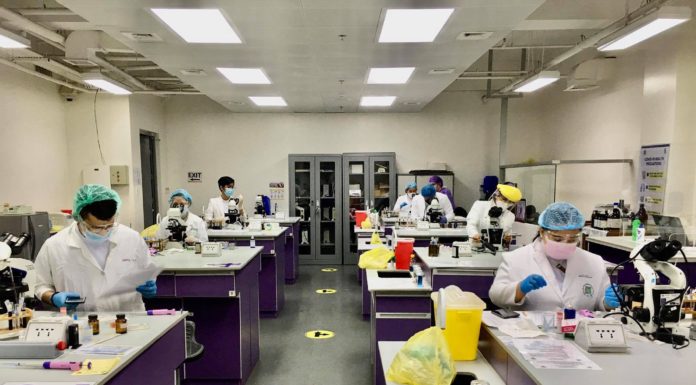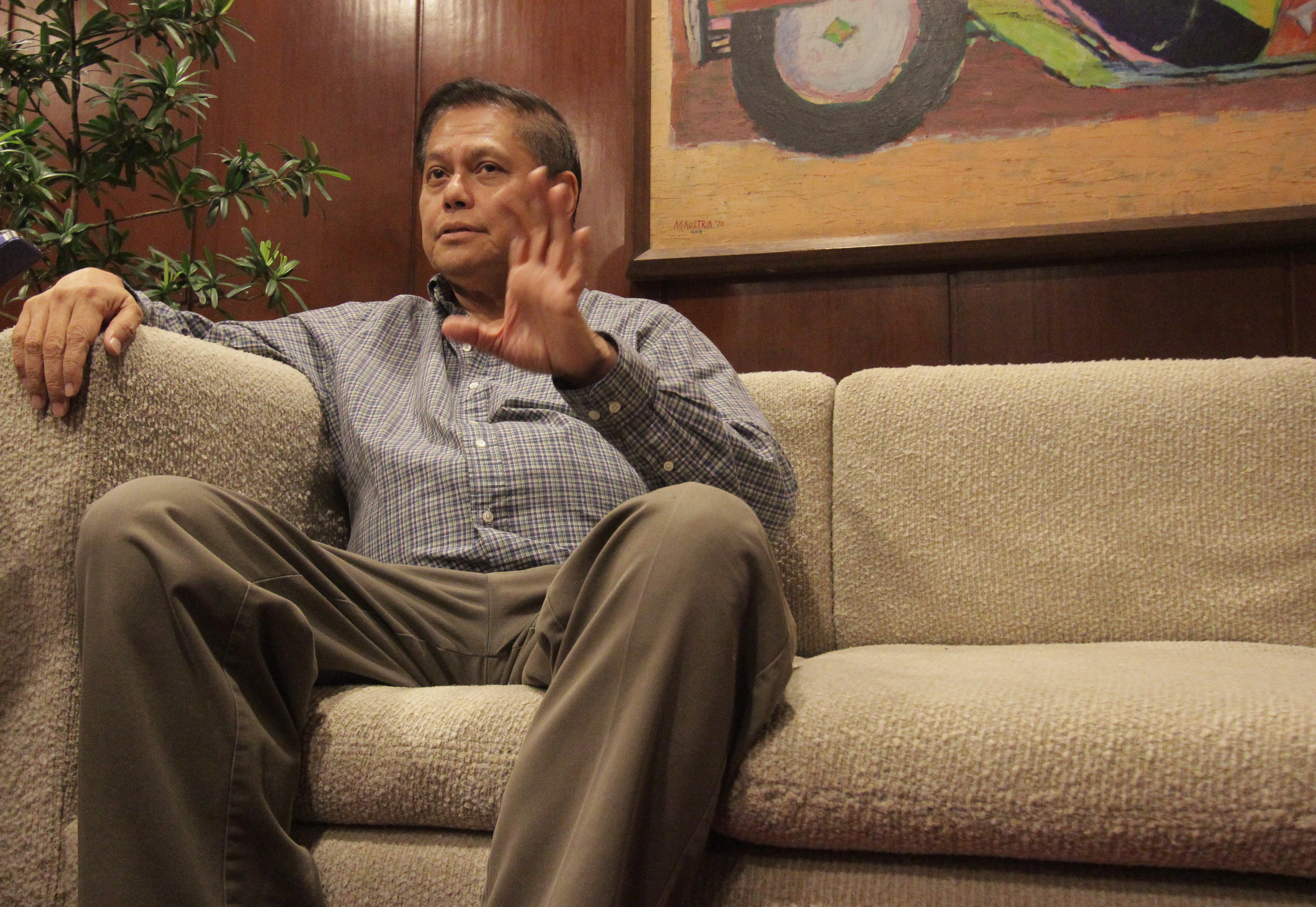A LONDON consultancy placed UST near the tail-end of a new ranking of Asia’s 200 top universities, behind three other Philippine schools.
UST stood at No. 144 in the listing of website QS.com of top higher education institutions in the region, behind University of the Philippines (UP) which emerged as the top Philippine university in the survey at the 63rd spot, De La Salle University (76th) and Ateneo de Manila University (84th)
But UST was in the top 100 of seperate listings in four fields — arts, life sciences, natural sciences, and social sciences.
Commenting on the results of the survey, Rector F. Rolando V. de la Rosa, O.P. said in a statement that the rankings were based largely on “perception,” meaning universities which “advertise” themselves have an edge.
UST did not submit data to the London-based Quacquarelli Symonds (QS), which conducted the survey, he said. Nor did UST accept offers from the survey organizers to attend conferences or advertise in their publications and websites.
De la Rosa likened the listing to a “Who’s Who” enticing individuals to advertise to be included in a roster of important people, and as such, the criteria used “might not truly reflect the unique situation or context of an individual or particular university.”
UST fared poorly in the 2008 listing of the world’s top universities by Times Higher Education (THE) and QS, landing within Nos. 401 to 500 of the yearly ranking.
The Asian rankings employed a different methodology from the yearly THE-QS World University Rankings, whose 2008 edition saw Jesuit-run Ateneo overtaking UP at no. 254. UP ranked only 276th in the 2008 global listing, leading many in academic circles to question the survey’s credibility.
In what seems to be a repeat of 2008, the Asian rankings placed UST behind Ateneo when it comes to Life Sciences and Biomedicine, despite the fact that UST, Asia’s oldest university, offers more courses and is acknowdged as the pioneer in the field.
The Asian survey was topped by University of Hong Kong. Japan, South Korea, and China had the most number of universities in the list, at 58, 46, and 39, respectively.
Together with four schools from Hong Kong and two from Singapore, these countries dominated the top 20 with 10 universities from Japan, three from South Korea, and two from China.
The survey, which saw South Korean schools rise dramatically in ranking, was done with Seoul newspaper Chosun Ilbo.
Neighboring countries had more schools in the top 200 than the Philippines — India had 11; Indonesia, 8; Malaysia ,6; and Thailand, 8.
It used different criteria. There was less weight on Academic Peer Review (from 40 percent to 30 percent); a new criteria on papers per faculty and citations per paper (15 percent each); inbound and outbound exchange students (2.5 percent each) international students enrolled in universities (5 percent); international faculty (5 percent); student-faculty ratio (20 percent); and a review byAsian employers (10 percent).
Ben Sowter, head of research at QS, said there was a “richer picture” in comparing universities with the revised criteria.
“For example, countries with a first language other than English use student exchanges as a key approach to internationalization, which is reflected in the QS.com Asian University Rankings,” Sowter said in a statement.
“The results of the QS.com Asian University Rankings focus on regionally relevant measures of excellence, with the top performing universities distinguished not only by quality, but also by high productivity of research, compared to their regional peers,” said Nuncio Quacquarelli, managing director of QS.
He said the performance of schools in Hong Kong, Japan, and Singapore was expected because they had a strong influence, but South Korea’s was unexpected.
Ratings based on subject
Reflecting the general outcome of the survey, UST was also at the tail-end in the majority of subject rankings QS.com considered, and was not even included in the Information Technology and Engineering category of the survey.
Based on subject areas namely Arts and Humanities, Life Sciences and Biomedicine, and Social Sciences, UST lagged behind the three Philippine universities in the list with a score of 25.6, 16, and 20.3, respectively. However, the University placed third in Natural Sciences with a 13.5 score.
State-run UP led the Philippine universities on each subject area except in Natural Sciences, which Ateneo topped with a 40.7 score. UP scored 37.3. Meanwhile, La Salle consistently placed third among the subjects except Natural Sciences, where it landed fourth after UST with 12.5.
The Academic Peer Review is conducted by the QS.com globally by distributing survey questions to two key databases: The World Scientific (www.worldscientific.com), and the International Book Information Service (IBIS), a service from Mardev (www.mardev.com). Respondents were asked about the higher institutions inside and outside their country and their answers are compiled afterwards.
No data submitted
Despite getting into the top 100 in Life Sciences and Biomedicine, De la Rosa was not satisfied with UST’s rating, which lagged behind the three other Philippine universities.
“It is quite puzzling that another university in the country ranked much higher than UST in the field of Life Sciences and Biomedicine when it hardly offers any course in the field like Pharmacy, Medical Technology, Nursing, Physical and Occupational Therapy,” he said.
De la Rosa also noted that the Student-Faculty Ratio criterion assumes that the low number of students per classroom translates to higher quality of teaching. The survey gave a higher score to a university with a lower number of students per classroom.
Evaluation sdone by the Commission on higher Education (Ched), Civil Service Commission, and embassies based in the Philippines could be better indicators of a university’s quality, he said.
“Compared to some elitist schools that charge very high tuition fees and therefore have very small classroom size, UST has proven that class size does not interfere with the quality of instruction delivered by teachers,” the Rector said.
De la Rosa congratulated UST faculty for excelling in their primary vocation as teachers.
“Proof to this is the graduates who excel in practically all licensure exams, garnering top places and securing for the University the highest passing averages. Our teachers managed to imbue students with the necessary values, skills, and knowledge for the practice of their chosen profession,” he said.
However, De la Rosa admitted that the faculty members have “not yet imbibed a research culture” despite UST’s big incentives and budget for research.
“They view themselves primarily as teachers, transmitters of knowledge, rather than producers of new knowledge,” he said.
Discrepancy
No Philippine university managed to enter the top 100 list of schools with the most number of papers and citations.
Even so, Fortunato Sevilla, assistant to the Rector for research and development, doubted the credibility of the survey, considering that the sources QS.com used in determining the number of papers and citations per school include one where the University had posted a good production rate.
Scopus, the largest citation database of research literature covering over 16,000 peer-reviewed journals from more than 4,000 publishers, was used by QS.com as a source for paper and citation criteria along with Web of Science from Thomson Reuters, and Google Scholar.
“The QS.com Asian University Rankings utilized Scopus, principally due to broader journal coverage leading to results for a larger number of institutions,” QS.com stated.
Sevilla said there was a huge discrepancy between the data of QS.com and figures he got from Scopus last September. Sevilla’s own data showed that for the past five years up to 2008, the University produced a total of 117 research papers. QS.com said UST had only 61.
In fact, the University was in the top eight Philippine institutions with the most research papers from 1963 to 2007.
“But in the international arena, the Philippines as a country is really below the list,” Sevilla told the Varsitarian.
According to QS.com, the data were submitted to them by the Office of the Vice Rector for Academic Affairs on Sept. 15, 2007. Sevilla said the office might have not coordinated with the Office for Research and Development (ORD) during the data gathering process of QS.com.
Ahead of UST, the top producers of research papers in the Philippines are the International Rice Research Institute, the three UP campuses in Diliman, Los Baños, and Manila, La Salle, and the South Asian Fisheries Development Center Philippines.
Weight on peer review
The significant weight QS.com gave to Academic Peer Review may have caused the dismal performance of UST, with Sevilla admitting that the University really has to work on its “international visibility.”
Though in the top 100 in this category, UST still lagged behind other Philippine schools in the Academic Peer Review indicator, placing 85th. UP still topped the list at 29th place, followed by Ateneo and La Salle at 34th and 72nd, respectively.
“Locally, we are not bad. But we are working on the international level,” Sevilla said.
For instance the ORD is encouraging professors to write research papers and publish them in international journals so that foreign institutions may be able to read about the University research output.
“We must make our presence felt in other countries,” he added.
Social Research Center acting director Alvin Ang said it would take time for UST to figure prominently in the global academic scene.
“It takes at the earliest six months, and up to two years, before a research paper is approved for circulation by top caliber (international) journals,” Ang told the Varsitarian.
Ang also described the QS.com survey as also “perception-based,” but fell short of discrediting it, saying it also serves as a wake-up call on universities to look at what is wrong with their systems.
De la Rosa said: “It is very difficult for a university to rank high in such surveys unless they enjoy big media mileage or they have extensive press releases to advertise themselves,” he said.
The yearly survey relies chiefly on ratings by peers which weigh 40 percent followed by the student-to-faculty ratio and job recruitment, and foreign faculties and students.
“It has never been the tradition of the University of Santo Tomas to engage in such self-promotion,” the Rector said in his statement.
“Despite repeated invitations to participate in conference sponsored by the THE-QS and to advertise the University in its websites and publications, we have refused to do so,” he said. “I do not want to think that this is the reason why UST ranked only 144th in the survey.” With reports from Prinz P. Magtulis


















